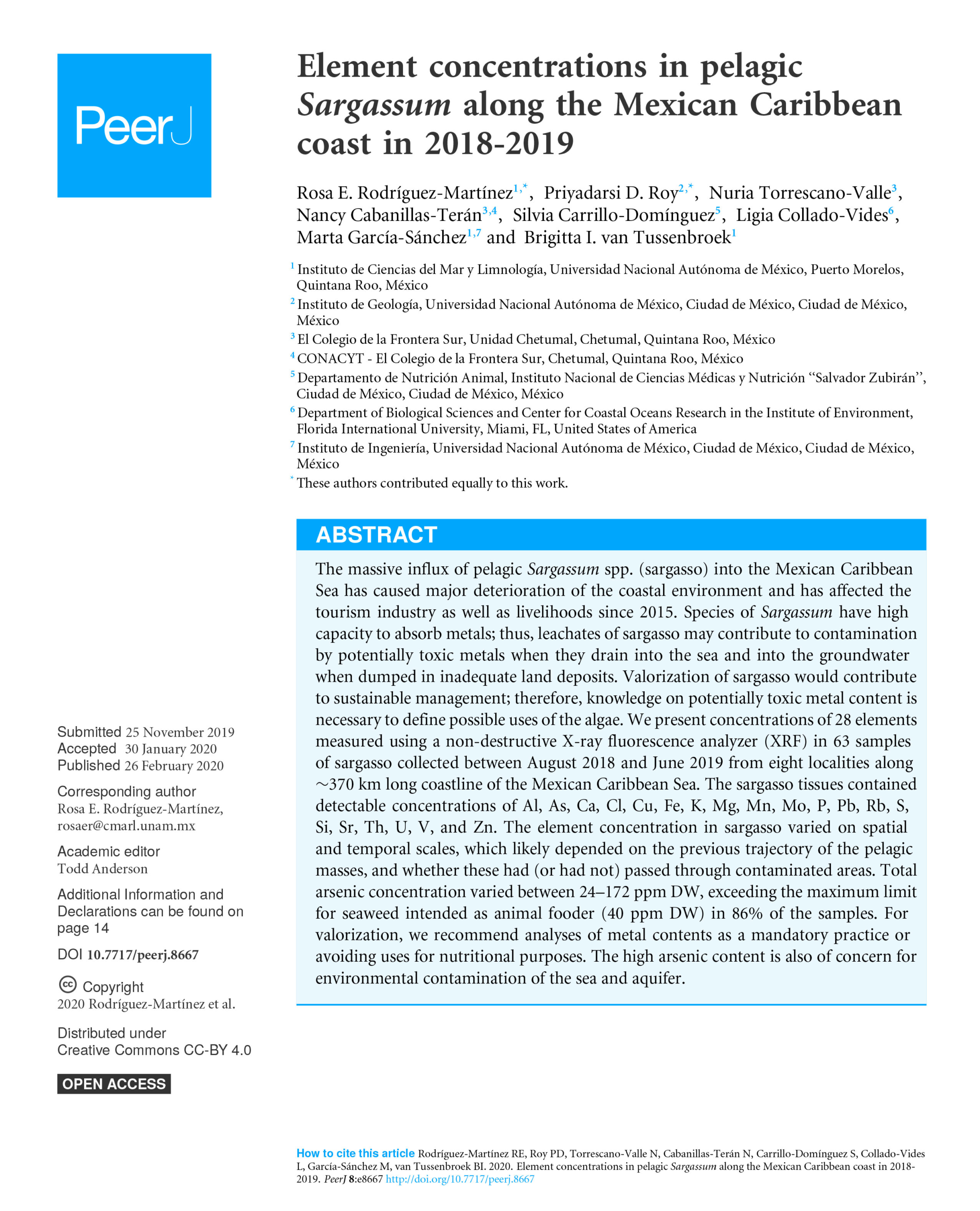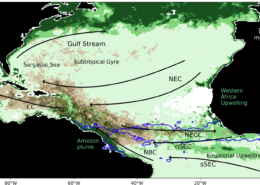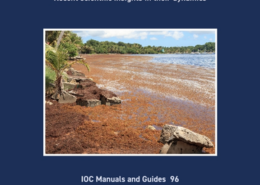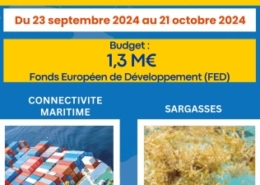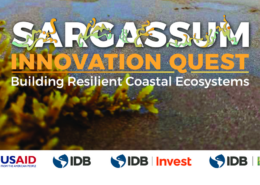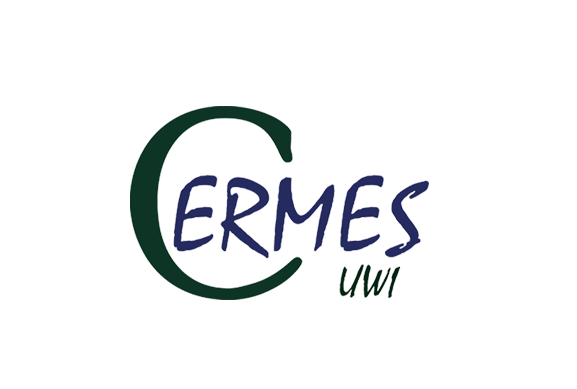ELEMENT CONCENTRATIONS IN PELAGIC SARGASSUM ALONG THE MEXICAN CARIBBEAN COAST IN 2018-2019
February 26, 2020
Abstract
The massive influx of pelagic Sargassum spp. (sargasso) into the Mexican Caribbean Sea has caused major deterioration of the coastal environment and has affected the tourism industry as well as livelihoods since 2015. Species of Sargassum have high capacity to absorb metals; thus, leachates of sargasso may contribute to contamination by potentially toxic metals when they drain into the sea and into the groundwater when dumped in inadequate land deposits. Valorization of sargasso would contribute to sustainable management; therefore, knowledge on potentially toxic metal content is necessary to define possible uses of the algae. We present concentrations of 28 elements measured using a non-destructive X-ray fluorescence analyzer (XRF) in 63 samples of sargasso collected between August 2018 and June 2019 from eight localities along ∼370 km long coastline of the Mexican Caribbean Sea. The sargasso tissues contained detectable concentrations of Al, As, Ca, Cl, Cu, Fe, K, Mg, Mn, Mo, P, Pb, Rb, S, Si, Sr, Th, U, V, and Zn. The element concentration in sargasso varied on spatial and temporal scales, which likely depended on the previous trajectory of the pelagic masses, and whether these had (or had not) passed through contaminated areas. Total arsenic concentration varied between 24–172 ppm DW, exceeding the maximum limit for seaweed intended as animal fooder (40 ppm DW) in 86% of the samples. For valorization, we recommend analyses of metal contents as a mandatory practice or avoiding uses for nutritional purposes. The high arsenic content is also of concern for environmental contamination of the sea and aquifer.

